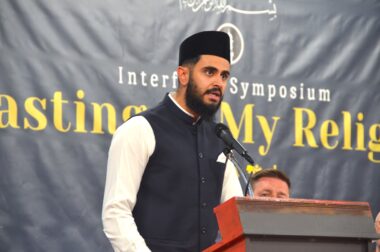

RACV is calling on motorists to remain vigilant about driveway safety, and to maintain the success of 2024 and prevent the injury or death of children in driveways.
The Coroners Court of Victoria did not record the death of a child in a driveway last year – a welcome change after 13 children aged between one and 10 lost their lives in driveway tragedies between 2020 and 2023.
RACV Head of Policy James Williams said that operating a vehicle in a driveway requires the same level of mindfulness and risk mitigation as driving on the road.
“We have seen a substantial improvement in reversing camera technology in recent years, and motorists understand the need to check for children and other obstacles when reversing down driveways,” Mr Williams said.
“Motorists may not be aware that many of the driveway deaths we are seeing in Victoria are now forward-facing. Young children are not always visible when they are just below the front of the car, especially larger vehicles and SUVs that have higher bonnets.
“Parents and carers would know that young children are unpredictable and do not have the same cognition as adults do. This places young children at an increased risk in driveways, no matter how slow a vehicle is travelling.
“We’re relieved that Victorians prevented driveway tragedies last year, but we must remain vigilant to keep it that way.”
RACV advises motorists to follow these driveway safety measures:
- Always look for children before starting the vehicle.
- Always look for children when entering a driveway.
- Do not over-rely on a vehicle’s cameras and sensors to detect children.
- Ensure children are actively supervised and kept well away from moving vehicles.
- Educate family members and visitors about the risks of driveway incidents.
- Encourage children to play in safe areas away from driveways.
Mr Williams also reminded motorists than in Victoria the driver of a vehicle must not reverse the vehicle unless the driver can do so safely.
“Reversing safely is important to consider especially on driveways that lead into main roads. Road Rule 296 provides a fine of up to three penalty units for not reversing safely from a driveway,” Mr Williams said.
“RACV also reminds motorists that it is legal to use the horn to warn other road-users or animals of the approach or position of your vehicle. This may include when reversing down a driveway.”
To prevent further tragedies, RACV continues to advocate for an increase in vehicle safety technologies as a standard feature in new vehicles but notes the importance of not over-relying on the technology.
“While new safety technology in our cars is recommended for all motorists, we shouldn’t become over-reliant on cameras and sensors,” Mr Williams said.
“The best way to prevent accidents is to keep children away from driveways and ensure they play in a safe area, far from moving cars.”
For more information on driveway safety, visit the driveway safety page of the Kidsafe website.
-ENDS-
Further information
Since 1903, RACV has been one of Australia’s most trusted brands and is the largest member organisation in Victoria.
RACV is proud to provide exceptional experiences for our members and customers through a range of products and services across motoring and mobility, home, energy and leisure. These include emergency roadside assistance, motor insurance, home insurance, home trades and an increasing range of options in the cleaner energy space, such as RACV Solar. We have 10 clubs and resorts across Australia and offer a range of domestic and international holiday packages, tours and cruises from our trusted travel partners.
The information provided is general advice only. Before making any decisions please consider your own circumstances and the Product Disclosure Statement and Target Market Determinations. For copies, visit racv.com.au. As distributor, RACV Insurance Services Pty Ltd AFS Licence No. 230039 receives commission for each policy sold or renewed. Products issued by Insurance Manufacturers of Australia Pty Ltd ABN 93 004 208 084 AFS Licence No. 227678.
RACV Trades is a trading name of RACV's trade partner, Club Home Response Pty Ltd (Victorian registered domestic building practitioner number CDB U 100178). All works are performed or arranged by Club Home Response Pty Ltd. trading as RACV Trades.
Media enquiries
RACV Media
Phone: 0417 041 398
Email: [email protected]



